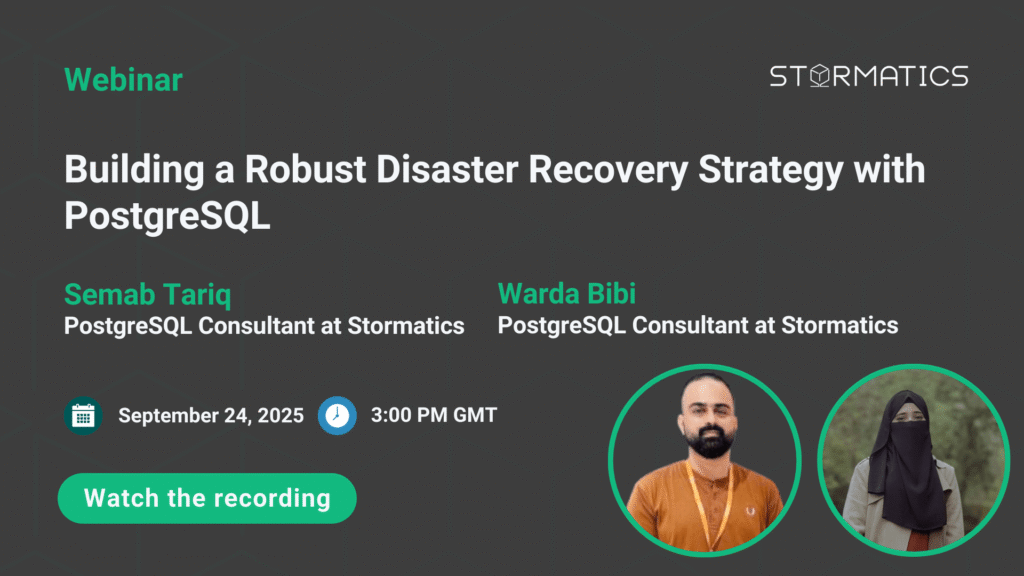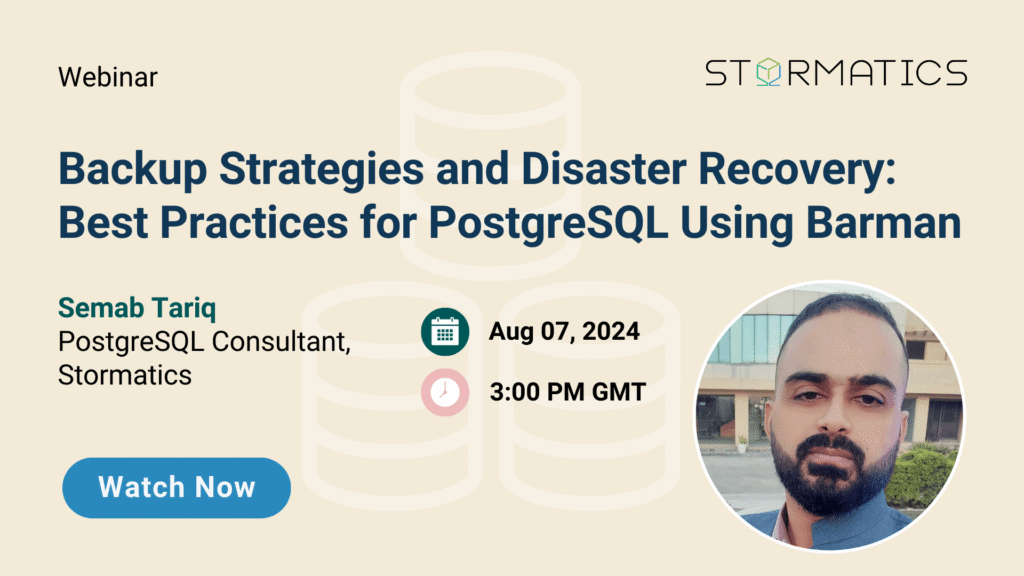PostgreSQL Backup and Disaster Recovery Solutions
When it is critical, you can count on us!
Disaster Recovery (DR) is your safety net against unexpected catastrophes, ensuring your critical data is never lost and your operations bounce back swiftly. With our tailored DR solutions, your PostgreSQL databases remain resilient, even in the face of disaster.
At Stormatics, we take complete ownership of your PostgreSQL Disaster Recovery. We design robust strategies and manage backups and recovery processes so you are always proactive and protected.
At Stormatics, our Disaster Recovery solutions are designed to safeguard your data and ensure swift recovery from catastrophic failures. Using offsite backups, point-in-time recovery, and reliable failover mechanisms, we ensure you achieve an RTO and RPO of close to zero.
Schedule a consultation today to discover how our backup and disaster recovery solutions can safeguard your data and ensure seamless recovery during critical moments.

5 good reasons to invest in PostgreSQL Backup and Disaster Recovery

Customer Success Story
Reliable Backups and Disaster Recovery for a Middle Eastern Government Entity
A critical government organization in the Middle East, tasked with protecting sensitive national data and ensuring uninterrupted services for millions of citizens, faced significant challenges with their backup and disaster recovery systems.
The organization had recently migrated to PostgreSQL but continued to rely on outdated practices from their previous database platform, storing backups locally without automation or offsite redundancy. This left their systems vulnerable to data loss, particularly in the event of hardware failures or regional disasters. A recent outage exposed these vulnerabilities, leading to hours of lost data and disruption of critical services.
By implementing an automated backup strategy and integrating offsite storage with point-in-time recovery, we ensured their data remained protected and downtime was effectively reduced to zero.
Frequently Asked Questions (FAQs)
Q. What is Disaster Recovery in PostgreSQL?
Disaster Recovery (DR) in PostgreSQL refers to restoring database services after major failures. It involves using backups, point-in-time recovery (PITR), and replication to minimize data loss and ensure that PostgreSQL databases are restored quickly.
Q. What is the difference between Backup and Disaster Recovery?
Backup involves creating copies of database data to restore it if needed, while Disaster Recovery (DR) is a broader strategy that includes restoring services, data, and operations after a catastrophic failure. DR in PostgreSQL typically uses backups and replication in combination to achieve quick recovery.
Q. How to recover a corrupted table in PostgreSQL?
Recover a corrupted table in PostgreSQL by restoring from a recent backup or using point-in-time recovery (PITR) if WAL (Write-Ahead Logging) is configured appropriately. Regular backups and WAL archiving are essential for recovering corrupted data.
Q. How to dump and restore PostgreSQL?
Use `pg_dump` to create a logical backup of your PostgreSQL database, saving it as a dump file. To restore, use `pg_restore` for custom-format backups or `psql` for plain-format backups. This process is crucial for disaster recovery.
Q. How to restore dump file in PostgreSQL using pgAdmin?
In pgAdmin, right-click on the target database, select ‘Restore’, choose the dump file, and configure the options. Click ‘Restore’ to initiate the process, making it easy to recover databases from backups in case of failure.




